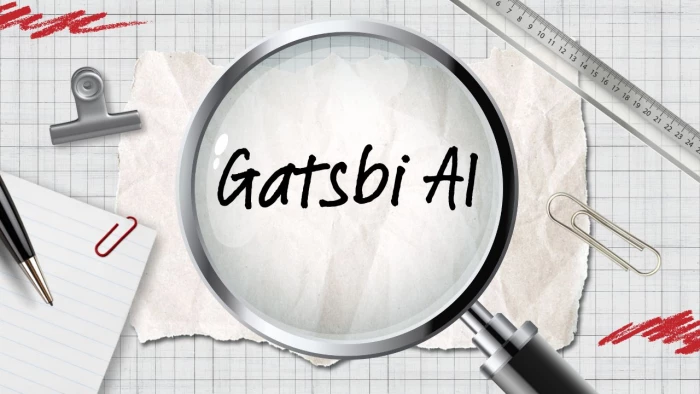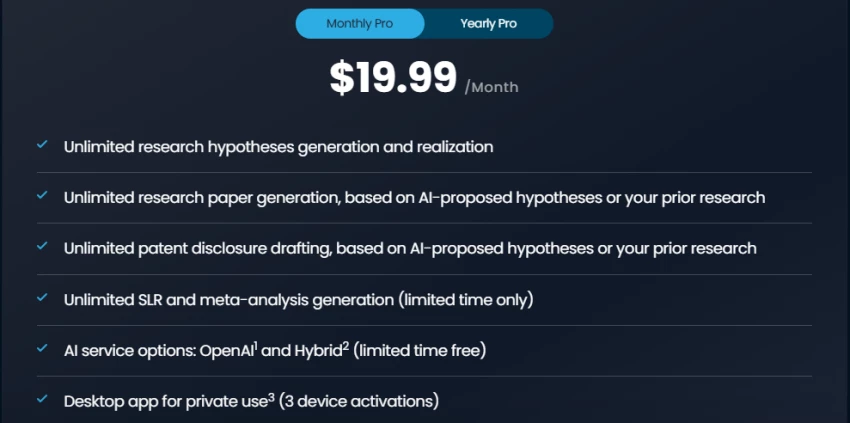

In 2025, “AI for research” has become more than a buzzword; it’s a survival tactic.
Among the new generation of tools, Gatsbi stands out for its focus on academic writing, research ideation, and patent drafting.

Rather than just polishing paragraphs, it aims to help users think, structure, and produce full-fledged research documents, a bold promise that naturally sparks curiosity (and a bit of skepticism).
At a glance, Gatsbi describes itself as a “research automation assistant”.
Under the hood, it blends large language models (LLMs) with internal logic for academic formatting, reference generation, and section-specific reasoning.
Here’s how users typically engage with it:
Think of it as Google Scholar meets ChatGPT, but with formatting built in.
The most commonly cited features across Gatsbi’s website, SansSapien, and AI Journey include:
These features are meant to create continuity, from idea to intellectual property.
The AI Paper Writer deserves its own spotlight.
Instead of offering prompts like “write me a paper,” Gatsbi structures the process in stages , abstract, introduction, methodology, results, and discussion, aligning with common journal formats.
It also claims to automatically:
While impressive on paper, it’s best viewed as a starting draft, not a submission-ready document.
AI can suggest flow; humans bring insight.
Interestingly, Gatsbi isn’t limited to academic work.
Its Patent Writing Mode has gained traction among inventors and R&D teams, helping translate technical ideas into structured patent drafts.
Users can input:
The platform then drafts sections like “Background,” “Technical Field,” and “Detailed Description.”
However, as Technology.org’s analysis notes, patent language is nuanced, so AI output still requires legal validation.
You’ll find plenty of AI writing tools claiming “academic” or “technical” ability — but Gatsbi’s workflow-driven architecture sets it apart.
| Aspect | Generic AI Writers | Gatsbi |
| Purpose | Text generation | End-to-end research document creation |
| Citation Support | Often limited | Built-in structured citation generator |
| Figures & Equations | Rarely handled | Supported with placeholders |
| Patent Drafting | Not offered | Integrated |
| Multilingual Output | Basic | Supports 10+ languages |
| Export Formats | Docx / PDF | Word, LaTeX, Markdown, PDF |
It bridges content generation and research documentation, but doesn’t eliminate the need for expert editing.
The key strength lies not in creativity but in efficiency; it helps researchers move from “blank page” to “workable draft.”

In short: Gatsbi helps you draft smarter, but it doesn’t think for you.
Browsing feedback on Trustpilot and LinkedIn discussions, user sentiment is cautiously optimistic:
That nuance matters; it means the tool is being used responsibly within research workflows.
Interestingly, Gatsbi has started appearing in corporate R&D and startup innovation circles.
Companies use it for:
It’s not limited to scholars, it’s for anyone working with structured technical writing.
AI in research raises big questions about authorship, originality, and plagiarism.
Gatsbi acknowledges this directly, stating that users are responsible for ensuring compliance with journal and institutional policies. (gatsbi.com/privacy)
→ Always disclose AI assistance when submitting manuscripts.
→ Validate data, sources, and claims before publishing.
Transparency isn’t optional in 2025, it’s reputation insurance.
If you’re comparing tools for research automation:
| Tool | Key Focus | Best For |
| Gatsbi | Research papers & patents | Academics, innovators |
| Jenni.ai | Academic summarization | Students |
| Scite.ai | Verified citations | Peer reviewers |
| Writefull | Grammar & journal readiness | ESL researchers |
| Scholarcy | Article summarization | Literature review |
Each fills a gap. Gatsbi happens to cover multiple gaps at once, though not perfectly.
Gatsbi’s value lies in automation without over-claiming authorship.
It helps you ideate, draft, and format faster, but expects you to bring the insight, ethics, and polish.
Use it to accelerate, not to replace.
Edit deeply. Cite carefully. Think critically.
If that sounds fair to you, Gatsbi can be one of the more efficient AI companions in your 2025 workflow.
Be the first to post comment!